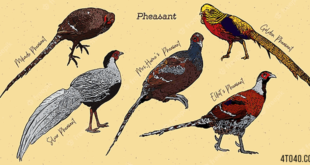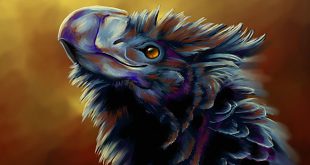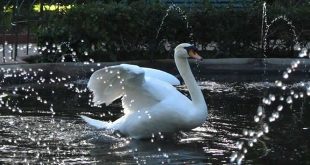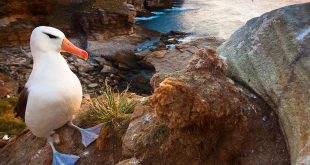Loons — 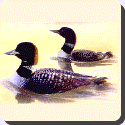 The loons (North America) or divers (UK/Ireland) are a group of aquatic birds found in many parts of North America and northern Eurasia (Europe, Asia and debatably Africa). All living species of loons are members of the genus (Gavia), family (Gaviidae) and order (Gaviiformes).
The loons (North America) or divers (UK/Ireland) are a group of aquatic birds found in many parts of North America and northern Eurasia (Europe, Asia and debatably Africa). All living species of loons are members of the genus (Gavia), family (Gaviidae) and order (Gaviiformes).
A loon is the size of a large duck or small goose, which it somewhat resembles in shape when swimming.
The plumage is largely black-and-white, with grey on the head and neck in some species, and a white belly, and all species have a spear-shaped bill.
The European name “diver” comes from the bird’s habit of catching fish by swimming calmly along the surface and then abruptly plunging into the water. The North American name loon comes from the bird’s haunting, yodeling cry.
Loons are excellent swimmers, using their feet to propel themselves above and under water and the wings for assistance. Because their feet are far back on the body, loons are badly adapted to moving on land. They usually avoid going onto land, except for nesting.
All loons are decent fliers though the larger species have some difficulty taking off, needing a run into the wind to pick up enough velocity to get airborne. Only the Red-throated Diver can take off from land. Once airborne, their considerable stamina allows them to migrate long distances southwards in winter, where they reside in coastal waters. Loons can live as long as 30 years.
Loons eat fish, amphibians, and crustaceans, which they hunt under water, finding their prey by sight. This includes crayfish, frogs, snails, salamanders and leeches. They prefer clear lakes because it is easier to see prey. The loon’s pointy bill is used to stab or grasp prey. Vertebrate prey is eaten head first to facilitate swallowing.
To help digestion, loons swallow small pebbles from the bottom of a lake. Similar to grit eaten by chicken, these gastroliths may assist the loon’s gizzard in crushing the hard parts of the loon’s food (the exoskeletons of crustaceans and the bones of frogs and salamanders), as prey is swallowed whole, or the gastroliths may be involved in stomach cleaning as an aid to regurgitation of indigestible food parts. Loons may inadvertently ingest small lead pellets, released by anglers and hunters, which will slowly lead to the loon’s death by lead poisoning. Jurisdictions that have banned the use of lead shot and sinkers include Maine, New Hampshire, Vermont, some areas of Massachusetts, Yellowstone National Park, Great Britain, Canada, and Denmark.
 Kids Portal For Parents India Kids Network
Kids Portal For Parents India Kids Network
